If you are wondering what the best places in Delhi India are that you should visit in your lifetime. So here are the top 10 places to visit in Delhi India that are the most famous that you should see. I have put them randomly or you can say what l like the most to visit first and you should too.
Table of Contents
1. India Gate -Top 10 Places to Visit in Delhi
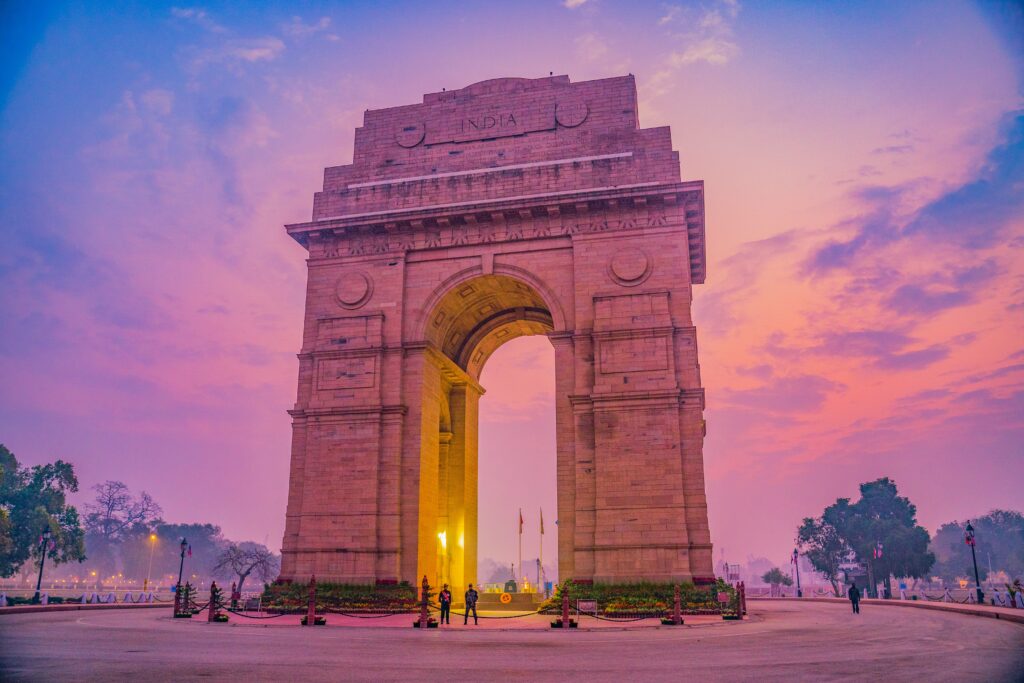
India Gate is one of the most famous places in India and in Delhi of course. It’s a Vey renowned place in Delhi and there are too many modern improvements that have been done by the government to attract more visitors and more travelers there to see the Indian gate and enjoy basically. Nowadays even at night, it is so crowded. I must say every love this place to visit even foreign people love this place a lot to see.
The India Gate is like a big monument in New Delhi, a special city in India. It’s there to remember and honor around 84,000 soldiers from the Indian Army who passed away between 1914 and 1921 in a big war called the First World War. These soldiers fought in different places like France, Flanders, Mesopotamia, and many other faraway spots.
The India Gate also has the names of around 13,300 soldiers written on it. Some of these soldiers were from the United Kingdom. The Gate was made by a clever architect named Sir Edwin Lutyens. He designed it to look like other important arches in places like Rome and Paris. It’s like a special door to remember the soldiers who did their best to protect their country. Just like how we remember important things, the India Gate helps us remember these brave soldiers.
2. Akshardham Temple Delhi
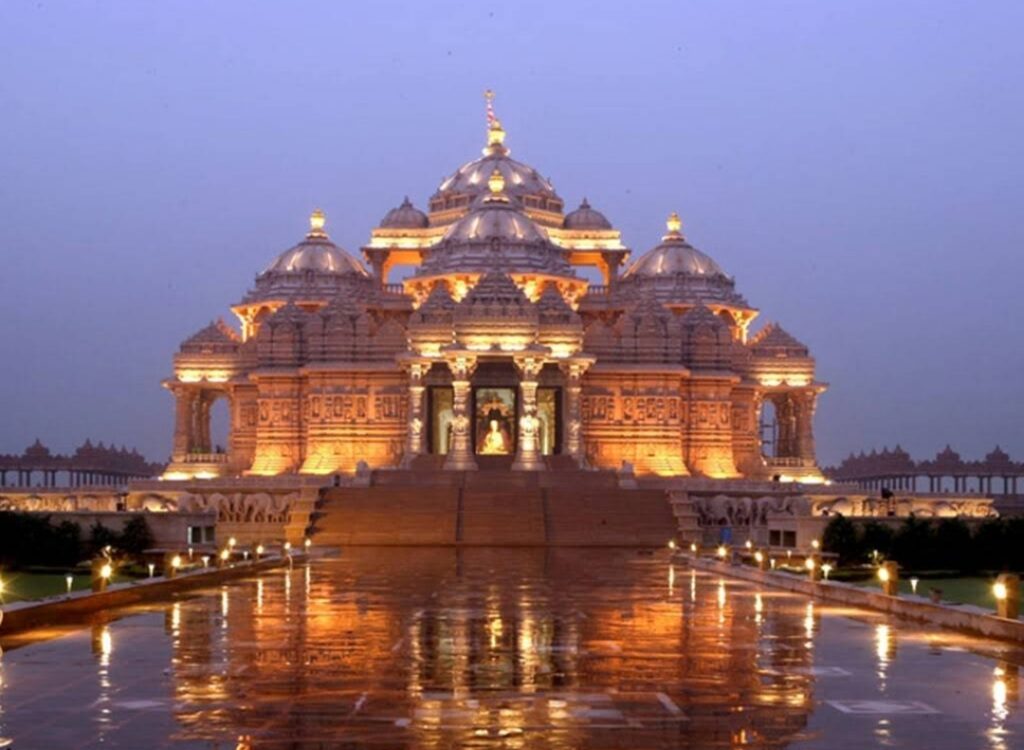
Akshardham Temple Delhi
Hey, Akshardham temple is a nice place to visit in Delhi. The temple is great to see like wonders in your eyes. You know Akshardham Temple’s full name is Swaminarayan Akshardham Temple.
‘Akshardham’ means the divine abode of God. Visiting a temple like this is a great way to remove negative energy from your body. it’s a spiritual and devotional place. This Temple is a traditionally styled complex and it was inaugurated on 6 November 2005 with the blessings of HH Pramukh Swami Maharaj and another volunteer.
3. Qutab Minar
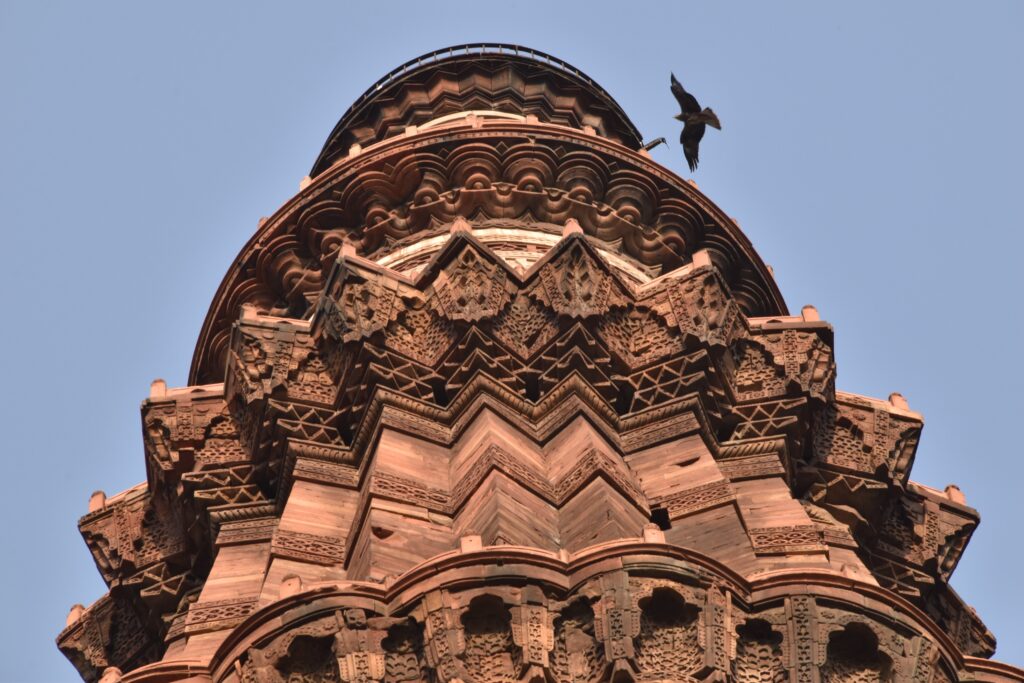
Qutab Minar
The Qutb Minar also spelled Qutub Minar and Qutab Minar, is a minaret and “victory tower” that forms part of the Qutb complex, which lies at the site of Delhi’s oldest fortified city, Lal Kot, founded by the Tomar Rajputs. It is a UNESCO World Heritage Site in the Mehrauli area of South Delhi, India. It is one of the most visited tourist spots in the city, mostly built between 1199 and 1220.
The surfaces of both are elaborately decorated with inscriptions and geometric patterns. The Qutb Minar has a shaft that is fluted with “superb stalactite bracketing under the balconies” at the top of each stage. In general, minarets were slow to be used in India and are often detached from the main mosque where they exist.
Qutab Minar metro station:
Qutab Minar is an elevated station on the Yellow Line of the Delhi Metro. It was inaugurated on 21 June 2010 as part of the 14.47 km completely elevated corridor from Qutab Minar – HUDA City Centre.
Hotels near qutab minar:
There are a lot of famous Hotels near Qutab Minar. some of them are here:
Qutub Residency Hotel, Anantkoti Hotel, King’s Court Hotel – Saket etc.
Qutab Minar ticket price is only Rs 35
New Delhi to qutab minar metro:
New Delhi to Qutab Minar; Fare. DMRC Rs. 40 ; Time, 0:33 ; First, 5:15 ; Last, 23:25
Rajiv Chowk to qutab minar metro:
Rajiv Chowk to Qutab Minar; Fare. DMRC Rs. 40 ; Time, 0:30 ; First, 5:18 ; Last, 23:27
Qutab Minar timing:
7 am–9 pm, Qutub Minar, Saturday hours
4. Humayun Tomb -Top 10 Places to Visit in Delhi
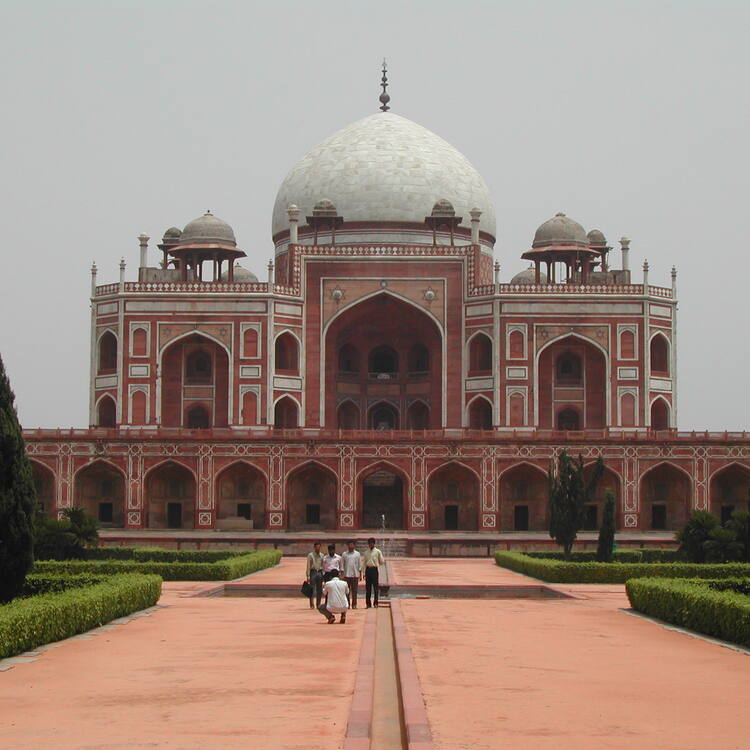
Humayun's Tomb
Humayun’s tomb is the tomb of Humayun in Delhi, India. The tomb was commissioned by Humayun’s first wife and chief consort, Empress Bega Begum under her patronage in 1558, and designed by Mirak Mirza Ghiyas and his son, Sayyid Muhammad, Persian architects chosen by her. and is located in Nizamuddin East, Delhi, India, close to the Dina-panah Citadel, also known as Purana Qila, that Humayun found in 1538.
It was also the first structure to use red sandstone at such a scale. The tomb was declared a UNESCO World Heritage Site in 1993, Besides the main tomb enclosure of Humayun, several smaller monuments dot the pathway leading up to it, from the main entrance in the West, including one that even pre-dates the main tomb itself, by twenty years.
It is the tomb complex of Isa Khan Niyazi, an Afghan noble in Sher Shah Suri’s court of the Suri dynasty, who fought against the Mughals, constructed in 1547 CE.
The Complex Encompasses
The complex encompasses the main tomb of Emperor Humayun, which houses the graves of Empress Bega Begum, Hajji Begum, and also Dara Shikoh, great-great-grandson of Humayun and son of the later Emperor Shah Jahan, as well as numerous other subsequent Mughals, including Emperor Jahandar Shah, Farrukhsiyar, Rafi Ul-Darjat, Rafi Ud-Daulat, Muhammad Kam Bakhsh and Alamgir II.
It represented a leap in Mughal architecture, and together with its accomplished Charbagh garden, typical of Persian gardens, but never seen before in India, it set a precedent for subsequent Mughal architecture. It is seen as a clear departure from the fairly modest mausoleum of his father, the first Mughal Emperor, Babur, called Bagh-e Babur in Kabul.
Though the latter was the first Emperor to start the tradition of being buried in a paradise garden. Modeled on Gur-e Amir, the tomb of his ancestor and Asia’s conqueror Timur in Samarkand, it created a precedent for future Mughal architecture of royal mausolea, which reached its zenith with the Taj Mahal, at Agra.
5. Hauz Khas
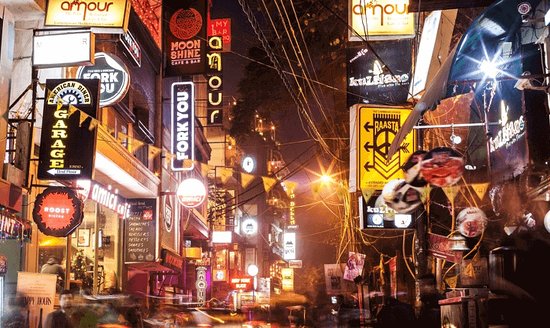
Hauz Khas is a neighborhood in South Delhi, its heart being the historic Hauz Khas Complex. Well known in medieval times, the Hauz Khas village has amazing buildings built around the reservoir. There are remnants of Islamic architecture roughly colored by splotches of urban culture.
It is centrally located and offers both rural Hauz Khas Village and urban Hauz Khas Enclave, Market environments. Hauz Khas is surrounded by Green Park, SDA to the west, Gulmohar Park to the north, Sarvapriya Vihar to the south, and Asiad Village and Siri Fort to the east.
It is also home to various diplomatic missions such as the ones of Albania, Iraq, Guinea Bissau, Burundi, and North Macedonia. Historically Hauz Khas was known as Hauz-e-Alai and is the place where Khusro Khan of Delhi Sultanate was defeated by Ghazi Malik in 1320.
This is witnessing the growth of trendy shops and lodgings. It is now becoming the center for domestic and international tourists and backpackers. The area also is home to historical monuments and has easy access to the Delhi Metro, making it a preferred location for many visitors to India and domestic middle-class visitors from other Indian states. The area attracts young tourists with numerous hostels and cafes
1. hauz khas metro station
Well there is a station in Delhi Metro with the same name Hauz khas, which is like a train that goes under the ground in the city. This station is really deep – it’s 29 meters underground, which is almost as tall as a 9-story building! It’s the deepest station in all of Delhi Metro.
There are 23 escalators in this station. Escalators are like moving stairs that help people go up and down without walking. And guess what? There are also 9 lifts! Lifts are like small rooms that can carry people from one floor to another, but in this case, it’s from the deep underground to the surface. So, Hauz Khas metro station has a lot of ways to help people move around easily.
2. cafes in hauz khas
Well, there are a lot of Cafes in hauz khas. Here are some of them which are most famous in the Hauz Khas village.
There are 1. Hauz Khas Social · 2. Raasta · 3. Yeti · 4. Matchbox · 5. Kunzum Travel Cafe · 6. Coast Cafe · 7. Gypsy Cafe · 8. The Tea Room.
6. Museum of Illusions

Museum of Illusions is one of the best places to visit in India and it is one of the best and most famous Places in India. This museum is really famous for Illusions. it attracts so many people attention here coz the Illusions it creat is crazy.
7. National Gallery of Modern Art, Delhi
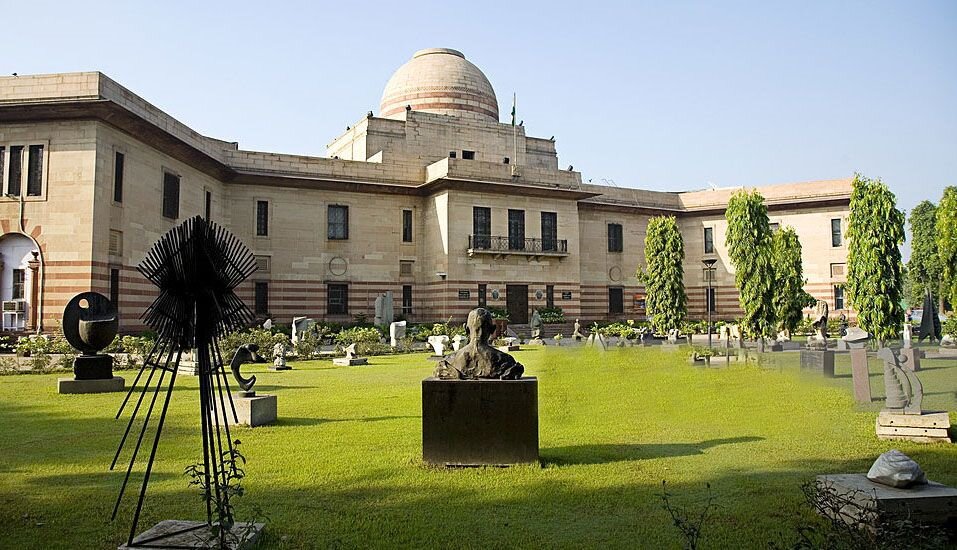
The idea of creating a National Art Gallery started with a group of artists from Delhi called AIFACS in 1938. This group was first called Delhi Fine Arts Society and was started by two artist brothers named Barada and Sarada Ukil. These brothers were taught by Abanindranath Tagore.
In 1946, this society arranged an important art exhibition with modern paintings from French and English artists, and etchings from American artists. At the same time, during a big meeting, AIFACS was chosen as a main art group. But over time, differences among artists weakened AIFACS’ position. Another group called All India Association of Fine Arts, Bombay, also claimed to be the main group during the Third All India Art conference in 1948.
In 1949, an Art Conference happened in Calcutta. Some respected artists and critics like Stella Kramrisch, Nandalal Bose, Jamini Roy, and others were invited. They talked about the National Museum, National Gallery of Art, and how art can educate the public.
Some said the government should create a committee for the National Art Gallery, while others, like artist Silpi Chakra, believed artists should lead. They decided to form the National Art Gallery and improve the National Museum. They also planned to create three Akademis as part of the Indian National Commission for Cooperation with UNESCO.
8 Lotus Temple
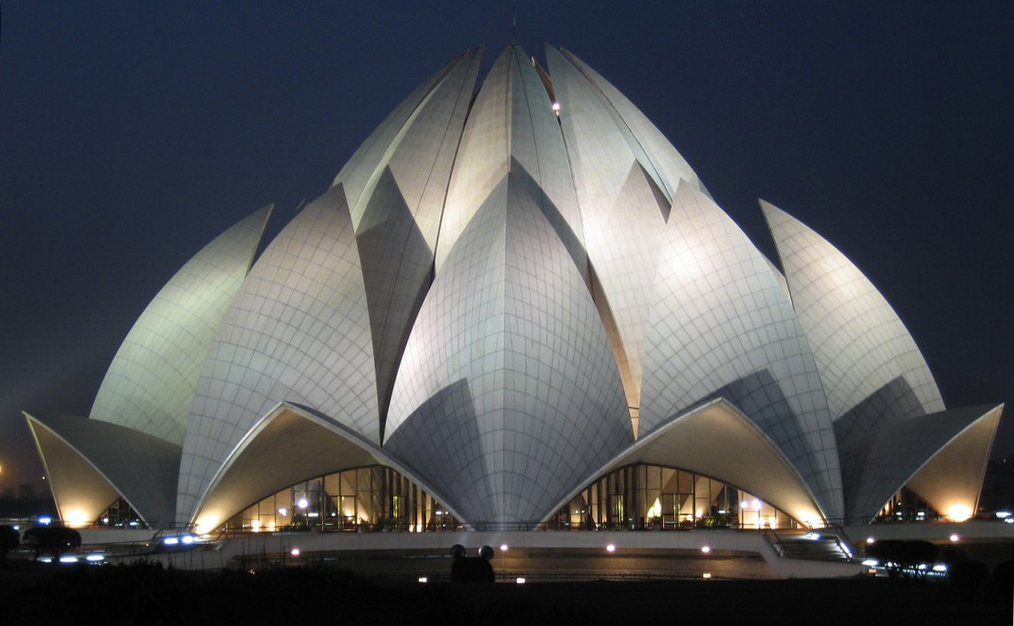
The Lotus Temple, located in New Delhi, India, is a Baháʼí House of Worship that was dedicated in December 1986. Notable for its lotus-like shape, it has become a prominent attraction in the city. Like all Bahá’í Houses of Worship, the Lotus Temple is open to all, regardless of religion or any other qualification.
The building is composed of 27 free-standing marble-clad “petals” arranged in clusters of three to form nine sides, with nine doors opening onto a central hall with a height of slightly over 34 meters and a capacity of 1,300 people. The Lotus Temple has won numerous architectural awards and has been featured in many newspaper and magazine articles.
9 Red Fort
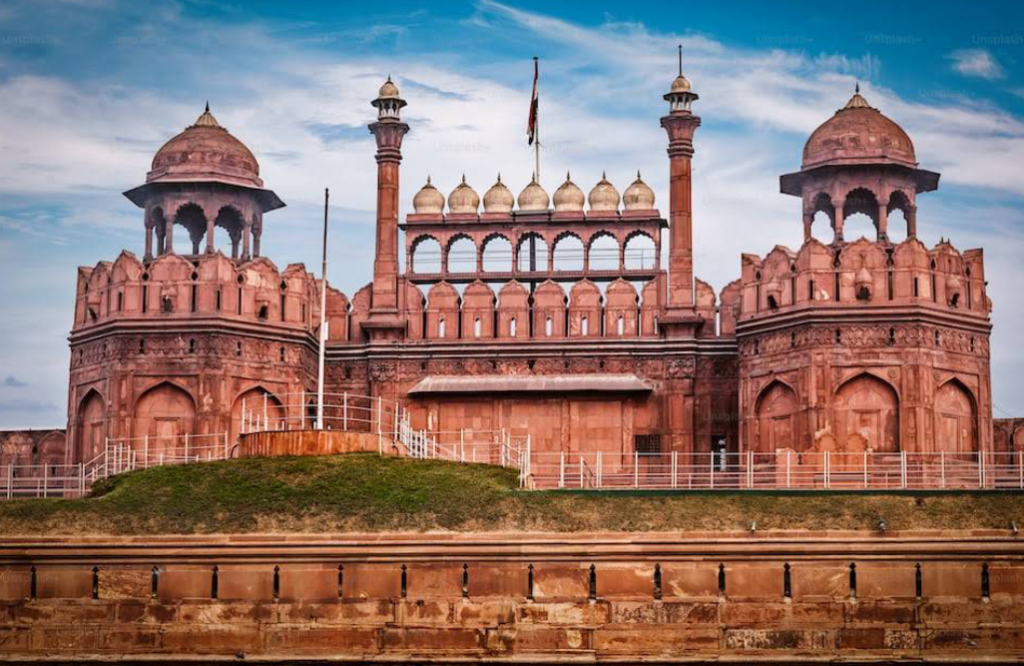
The Red Fort or Lal Qila is a historic fort in the Old Delhi neighborhood of Delhi, India, that historically served as the main residence of the Mughal emperors. Emperor Shah Jahan commissioned the construction of the Red Fort on 12th May 1638, when he decided to shift his capital from Agra to Delhi.
Originally red and white, its design is credited to architect Ustad Ahmad Lahori, who also constructed the Taj Mahal. The fort represents the peak in Mughal architecture under Shah Jahan and combines Persianate palace architecture with Indian traditions.
The fort was plundered of its artwork and jewels during Nader Shah’s invasion of the Mughal Empire in 1739. Most of the fort’s marble structures were subsequently demolished by the British following the Indian Rebellion of 1857. The fort’s defensive walls were largely undamaged, and the fortress was subsequently used as a garrison.
On 15 August 1947, the first prime minister of India, Jawaharlal Nehru, raised the Indian flag above the Lahori Gate. Every year on India’s Independence Day, the prime minister hoists the Indian tricolor flag at the fort’s main gate and delivers a nationally broadcast speech from its ramparts through the Public Address System of Indian Army Signals. The Red Fort was designated a UNESCO World Heritage Site in 2007 as part of the Red Fort Complex.
10 Agrasen ki Baoli
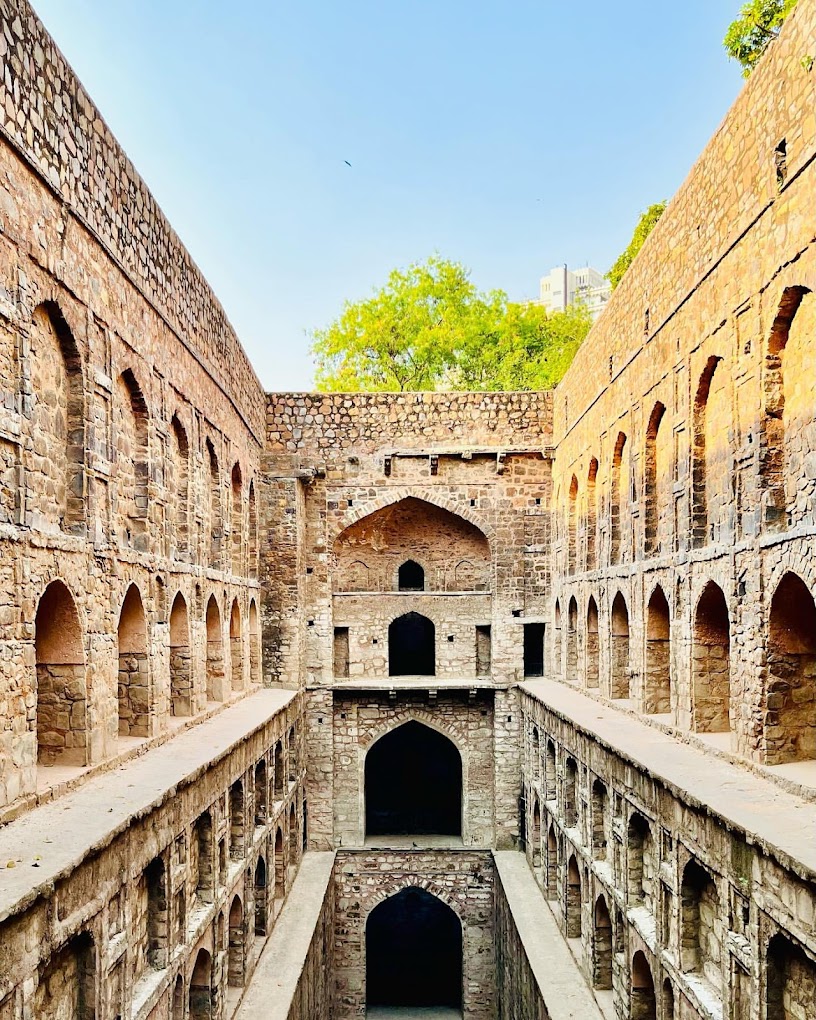
Agrasen Ki Baoli is a 60-meter long and 15-meter wide historical stepwell in New Delhi, India.
Located on Hailey Road, near Connaught Place, Jantar Mantar, it was designated a protected monument by the Archaeological Survey of India under the Ancient Monuments and Archaeological Sites and Remains Act of 1958.
The stepwell is believed to have been originally built by the legendary king Agrasen, but there is no historical evidence to support this claim.
The present architecture suggests that it was rebuilt in the 14th century during the Tughlaq or Lodi period of the Delhi Sultanate. The Baoli is open daily from 9 AM to 5:30 PM.
FAQs (Questions related to Blog and answers)
Where is India Gate?
India Gate is in New Delhi city capital of India.
Who built India Gate?
Well, India gate was built by Sir Edwin Lutyens.
How to reach India Gate by metro?
i). Take the Yellow Line metro to the Central Secretariat station.
ii). Exit the station from Gate No. 1 and walk for about 5 minutes to reach India Gate.
The distance between the Central Secretariat metro station and India Gate is about 2.3 kilometers. The travel time is about 10 minutes.
I hope this helps!
How to draw India gate?
Start with a large arch.
Add two smaller arches on either side.
Draw a lotus flower on top of the arch.
Add details such as the pillars and the sculptures.
Here are some additional tips for drawing India Gate
Use a pencil to sketch the basic shapes first.
Use a ruler to make sure the arches are symmetrical.
Add shading to give the drawing depth.
You can also use colored pencils or markers to add color to the drawing.
I hope this helps!
So these are the top 10 Places to visit in Delhi, it is not just yet there are more too but I will cover them in the next blog so please be patient I’ll be back with a new and informative blog like the same Places to visit in Delhi.
Please comment on your Suggestion in the comment box and let me know how was my blog what should I improve in my writing skills and what else should i have covered in the blog.

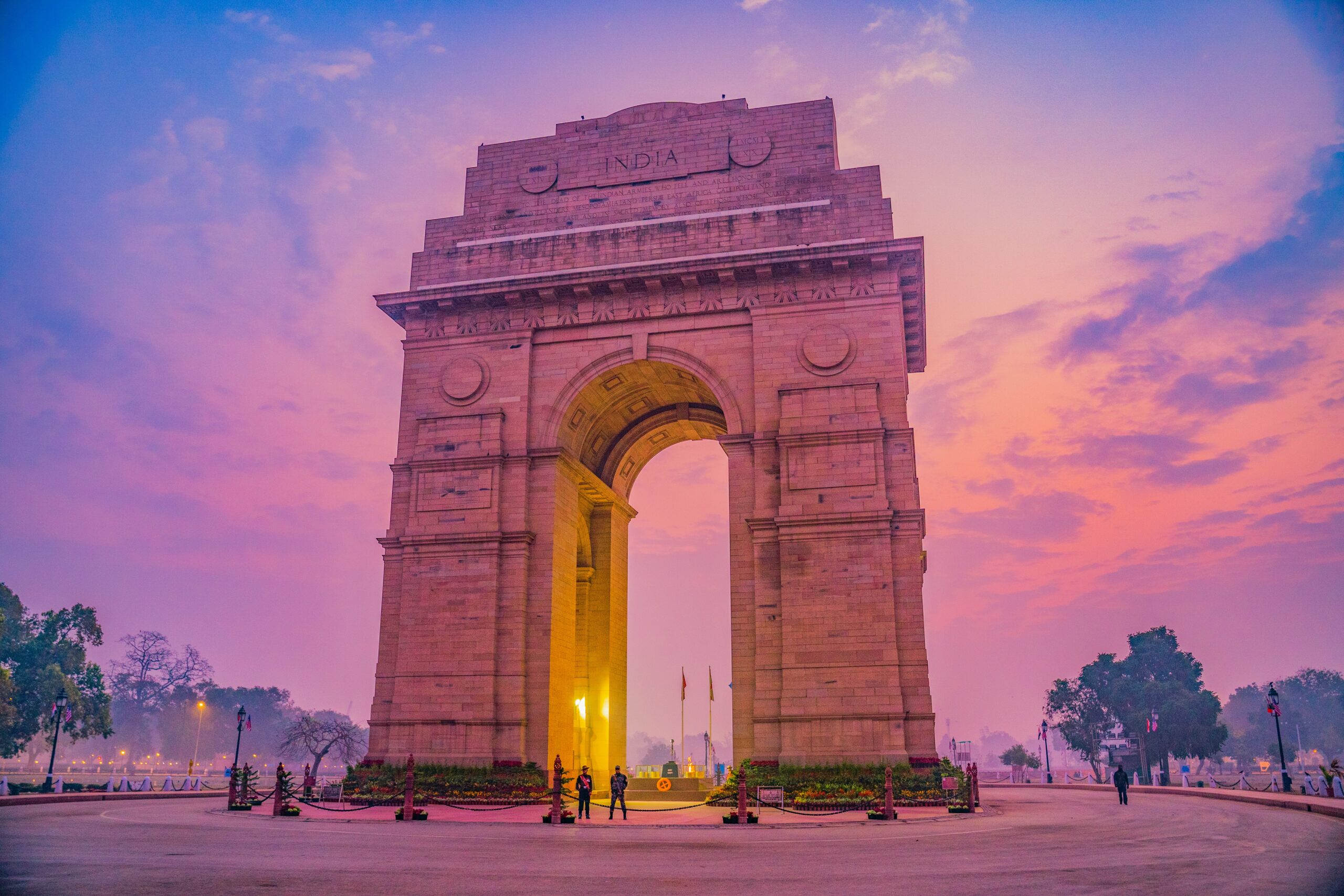
Hi, this is a comment.
To get started with moderating, editing, and deleting comments, please visit the Comments screen in the dashboard.
Commenter avatars come from Gravatar.